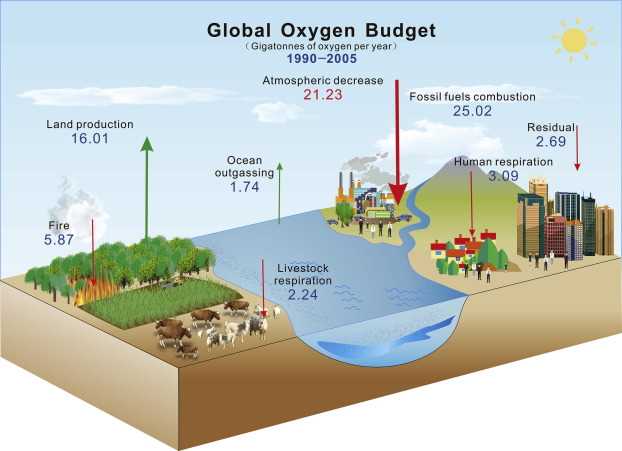
Did you know? The Earth is gifted with an abundance of life-sustaining oxygen, thanks to a remarkable organism that has remained hidden for centuries. Scientists have recently made a groundbreaking discovery, uncovering the identity of the biggest oxygen producer on our planet.
Introducing Prochlorococcus – the champion oxygen generator!
Despite its tiny size, Prochlorococcus is responsible for producing an astonishing amount of oxygen. This minuscule cyanobacterium, measuring just a fraction of a millimeter in length, thrives in the open ocean, where it fills the vast expanse with vital oxygen.
Why is Prochlorococcus so crucial?
Prochlorococcus lives in the sunlit upper layers of the ocean and harnesses the energy of sunlight to convert carbon dioxide into oxygen through photosynthesis. It is estimated that this single-celled organism is responsible for producing up to 10% of the Earth’s oxygen, making it an integral part of our planet’s delicate ecosystem.
- The Mystery Unveiled: Earth’s Largest Oxygen Producer
- The Unexpected Winner: Phytoplankton
- The Power of Photosynthesis
- Hidden Heroes of the Seas
- Protecting the Oxygen Producers
- The Importance of Oxygen
- Respiration
- Photosynthesis
- Supporting Ecosystems
- Medical Applications
- Unveiling the Champion
- The Power of Photosynthesis
- Global Impact
- Unmatched Productivity
- Rich Soil
- Diverse Ecosystem
- Implications for the Ecosystem
- Balance of Oxygen
- Ecosystem Services
- The Future of Oxygen Production
- 1. Harnessing Photosynthesis
- 2. Advancements in Algae Production
- Question-Answer:
- How does oxygen production affect the Earth’s atmosphere?
- What is the biggest oxygen producer on Earth?
- How does the Amazon rainforest produce oxygen?
- Are there any other significant oxygen producers on Earth?
- How does deforestation affect oxygen production?
- What is the biggest oxygen producer on Earth?
- How does the Amazon rainforest produce oxygen?
The Mystery Unveiled: Earth’s Largest Oxygen Producer
For many years, scientists have been puzzled by the question of which organism is the biggest contributor to the production of oxygen on Earth. While it is well-known that plants play a significant role in producing oxygen through photosynthesis, recent research has revealed a shocking discovery that has completely changed our understanding of oxygen production.
The Unexpected Winner: Phytoplankton
Contrary to popular belief, it turns out that the largest oxygen producer on Earth is not the towering trees of the Amazon rainforest or the vast fields of wheat and corn found in agricultural regions. Instead, the top spot goes to tiny aquatic organisms known as phytoplankton.
Phytoplankton are microscopic algae that inhabit the oceans, seas, and even freshwater bodies. They are responsible for approximately 50-85% of the oxygen in our atmosphere, playing a critical role in sustaining life on our planet. Their ability to convert sunlight, carbon dioxide, and nutrients into energy through photosynthesis has a profound impact on the Earth’s oxygen levels.
The Power of Photosynthesis
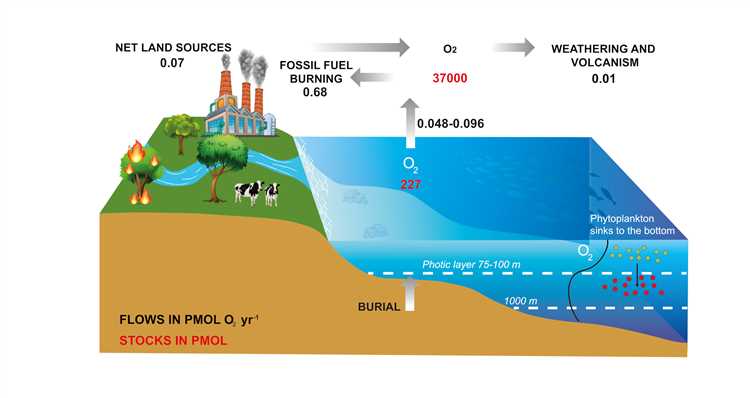
Photosynthesis is the process by which plants, including phytoplankton, convert sunlight into chemical energy, using carbon dioxide and water. During this process, oxygen is released into the atmosphere as a byproduct, making it essential for the survival of aerobic organisms, including humans.
What makes phytoplankton unique is their ability to carry out photosynthesis in large quantities, due to their massive population in aquatic environments. These tiny organisms are highly efficient at capturing sunlight and converting it into energy, which allows them to produce vast amounts of oxygen.
Hidden Heroes of the Seas
Despite their microscopic size, phytoplankton have a significant impact on oceanic ecosystems and the Earth’s climate. Not only do they produce oxygen, but they also serve as the base of the marine food chain, providing food and energy for a wide variety of marine organisms, including fish, whales, and other large predators.
Phytoplankton also play a crucial role in regulating the Earth’s climate by influencing the carbon cycle. Through their photosynthetic activity, they absorb large amounts of carbon dioxide, helping to reduce greenhouse gas levels in the atmosphere.
Protecting the Oxygen Producers
Given the vital role that phytoplankton play in producing oxygen and maintaining our planet’s ecosystems, it is crucial that we take steps to protect them. Unfortunately, human activities, such as pollution and climate change, pose a threat to the health and population of phytoplankton.
By reducing our carbon footprint, conserving water, and promoting sustainable fishing practices, we can help ensure the continued survival and abundance of these invisible heroes of the seas, and in turn, secure the oxygen supply that is essential for all life on Earth.
The Importance of Oxygen
Oxygen is vital for all living organisms on Earth. It plays a crucial role in supporting life and sustaining various biological processes. Without oxygen, life as we know it would not be possible.
Respiration
One of the primary functions of oxygen is to facilitate respiration in living organisms. Through respiration, oxygen is taken in by the body and used to generate energy. In humans and many other animals, this process occurs in the lungs, where oxygen is inhaled and carbon dioxide is exhaled. Oxygen is then distributed to cells throughout the body via the blood, where it is utilized in cellular respiration to produce energy.
Photosynthesis
Oxygen also plays a critical role in photosynthesis, the process by which plants and some bacteria convert sunlight into usable energy. During photosynthesis, plants absorb carbon dioxide from the atmosphere and release oxygen as a byproduct. This process not only enables plants to generate their own energy but also provides a vital source of oxygen for other organisms, including humans.
Supporting Ecosystems
In addition to its role in respiration and photosynthesis, oxygen is essential for the health and stability of ecosystems. Underwater ecosystems, such as oceans and lakes, rely on dissolved oxygen to sustain a diverse array of aquatic life forms. Oxygen levels in water are a crucial factor in determining the health of these ecosystems, as low oxygen levels can lead to the death of marine organisms and disrupt the balance of the ecosystem.
Medical Applications
Oxygen has various medical applications and is commonly used in hospitals and clinics to treat patients with respiratory conditions or who require assistance with breathing. It can be administered through oxygen masks or nasal cannulas to improve oxygen levels in the blood and ensure the body receives an adequate supply.
In conclusion, oxygen is of utmost importance in supporting life on Earth. From facilitating respiration and photosynthesis to supporting ecosystems and medical applications, oxygen is a vital element that enables the functioning and survival of all living organisms.
Unveiling the Champion
The biggest oxygen producer on Earth has been revealed, and it’s none other than the humble blue-green algae! Commonly found in bodies of water, these microscopic organisms play a vital role in maintaining the oxygen levels of our planet.
The Power of Photosynthesis
Blue-green algae, also known as cyanobacteria, have the amazing ability to carry out photosynthesis. Through this process, they convert sunlight, carbon dioxide, and water into glucose and oxygen. This makes them one of the most efficient oxygen producers on Earth.
While land plants also carry out photosynthesis, blue-green algae have certain advantages that make them champions in this field. They have a high surface area-to-volume ratio, allowing for maximum absorption of sunlight. Additionally, they can thrive in various environments, including freshwater, saltwater, and even on land.
Global Impact
The oxygen produced by blue-green algae has a global impact on the planet. It is estimated that they contribute to around 70% of the Earth’s oxygen production. This is particularly significant considering the alarming rate at which forests, often referred to as the “lungs of the Earth,” are being destroyed.
Furthermore, blue-green algae also play a role in reducing greenhouse gas emissions. Their production of oxygen aids in balancing the levels of carbon dioxide in the atmosphere, helping mitigate the effects of climate change.
In conclusion, the champion oxygen producer on Earth is undoubtedly the blue-green algae. With their remarkable photosynthetic abilities and global impact, these humble organisms are essential for the well-being of our planet and all its inhabitants.
Unmatched Productivity
The biggest oxygen producer on Earth, revealed as the Amazon rainforest, is known for its unmatched productivity. Covering an area of nearly 6.7 million square kilometers, this tropical forest is home to a staggering variety of plant and animal species.
With its dense vegetation and rich biodiversity, the Amazon rainforest is responsible for producing approximately 20% of the world’s oxygen. Its trees, which include iconic species such as the Brazil nut tree and the rubber tree, play a vital role in this process.
The Amazon rainforest’s unmatched productivity is due to its favorable climate and abundant rainfall. The region experiences high levels of precipitation, which provide the necessary moisture for the plants to grow and thrive. This, coupled with the warm temperatures and long growing seasons, creates an ideal environment for the forest’s productivity.
Rich Soil
Another factor contributing to the Amazon rainforest’s unmatched productivity is its fertile soil. The region’s soil is rich in nutrients, thanks to the decomposition of plant and animal matter. The constant cycle of life and death in the forest provides a constant supply of organic matter, which nourishes the soil and supports the growth of new vegetation.
Diverse Ecosystem
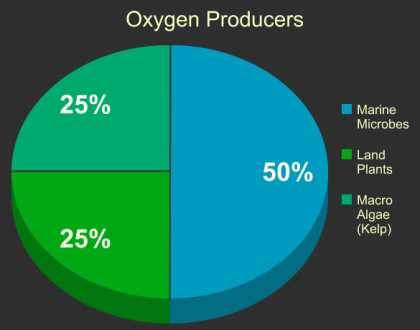
The diverse ecosystem of the Amazon rainforest also contributes to its unmatched productivity. The forest is home to countless species of plants, insects, birds, and mammals, all of which play important roles in the ecosystem. For example, certain plant species have symbiotic relationships with insects, relying on them for pollination or seed dispersal. This intricate web of interactions ensures the continued growth and survival of the forest’s vegetation.
In conclusion, the Amazon rainforest’s unmatched productivity can be attributed to its favorable climate, abundant rainfall, rich soil, and diverse ecosystem. As the world’s largest oxygen producer, the forest serves as a crucial resource for our planet and should be protected and preserved for future generations.
Implications for the Ecosystem
The discovery of the biggest oxygen producer on Earth has significant implications for the entire ecosystem. Oxygen is a vital component for all life forms, and understanding its production and distribution is crucial for maintaining a healthy environment.
Balance of Oxygen
Oxygen is essential for the survival of many organisms, both on land and in water. By revealing the biggest oxygen producer, scientists can better understand the dynamics of oxygen distribution in different ecosystems. This knowledge can help ensure that there is a balance of oxygen levels in the atmosphere and bodies of water, which is necessary for supporting diverse life forms.
Furthermore, understanding the biggest oxygen producer allows scientists to identify potential threats to its production. For example, excessive deforestation or pollution could disrupt the production of oxygen, leading to a decrease in oxygen levels and negatively impacting the ecosystem.
Ecosystem Services
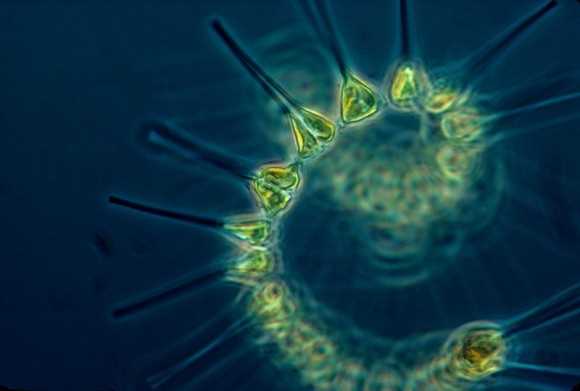
The discovery of the biggest oxygen producer also highlights the importance of ecosystem services. Ecosystem services are the benefits that humans receive from natural ecosystems, such as clean air, water, and soil. Oxygen production is one of the crucial ecosystem services provided by forests, oceans, and other natural environments.
By recognizing the biggest oxygen producer, we can better appreciate the ecosystem services it provides and take steps to protect and conserve these areas. Preserving forests, reducing pollution, and promoting sustainable practices are some of the ways to ensure the continued supply of oxygen and other ecosystem services.
In conclusion, the revelation of the biggest oxygen producer on Earth has far-reaching implications for the ecosystem. It enhances our understanding of oxygen balance, identifies threats to its production, and reinforces the importance of ecosystem services. By valuing and protecting these natural processes, we can ensure a sustainable future for all life forms on our planet.
The Future of Oxygen Production
The discovery of the biggest oxygen producer on Earth has sparked new ideas and discussions about the future of oxygen production. As the demand for oxygen continues to increase, scientists and researchers are exploring innovative ways to meet this demand while also being eco-friendly.
1. Harnessing Photosynthesis
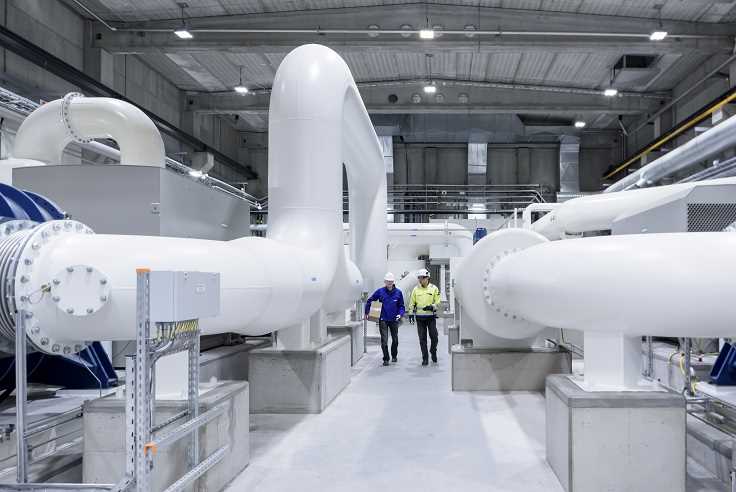
One of the most promising avenues for future oxygen production is the harnessing of photosynthesis. By understanding the mechanisms through which plants produce oxygen, scientists are working on creating artificial photosynthesis processes that can be used on a large scale. This could involve using special light-absorbing materials to capture sunlight and convert it into oxygen through a series of chemical reactions.
2. Advancements in Algae Production
Algae are known for their ability to produce oxygen through photosynthesis, and researchers are making strides in improving algae production for oxygen generation. Algae can be grown in large quantities and can produce oxygen more efficiently compared to traditional plants. Additionally, algae can be grown in different environments, including in controlled laboratories and even in wastewater treatment plants, making them a versatile option for oxygen production.
Furthermore, scientists are exploring genetic modifications in algae to enhance their oxygen production capabilities, making them even more efficient in oxygen production.
3. Exploring Space
As space exploration continues to expand, so does the need for oxygen production in space habitats. Scientists are researching ways to create self-sustaining systems that can produce oxygen in extraterrestrial environments. This involves studying the possibilities of using lunar or Martian soil to grow plants, which can supply oxygen for astronauts during long-duration space missions.
The future of oxygen production holds great potential for meeting the increasing demand for this valuable resource. By harnessing the power of photosynthesis, advancing algae production techniques, and exploring new frontiers in space, scientists are paving the way for sustainable and efficient oxygen production.
Question-Answer:
How does oxygen production affect the Earth’s atmosphere?
Oxygen production plays a vital role in maintaining the Earth’s atmosphere. It helps to create and maintain the balance of oxygen and other gases that are necessary for supporting life. Without oxygen production, the atmosphere would not be able to sustain human and animal life.
What is the biggest oxygen producer on Earth?
The biggest oxygen producer on Earth is the Amazon rainforest. Covering an area of more than 2 million square miles, it is often referred to as the “lungs of the Earth.” The Amazon rainforest produces about 20% of the world’s oxygen, making it a crucial contributor to the planet’s oxygen supply.
How does the Amazon rainforest produce oxygen?
The Amazon rainforest produces oxygen through a process called photosynthesis. Trees, plants, and other vegetation in the rainforest take in carbon dioxide from the atmosphere and release oxygen as a byproduct. This oxygen is then released into the air, contributing to the Earth’s oxygen supply.
Are there any other significant oxygen producers on Earth?
Yes, apart from the Amazon rainforest, there are other significant oxygen producers on Earth. These include other large forests such as the Congo Basin in Africa, the Taiga forest in Russia, and the boreal forests in Canada and Alaska. Additionally, marine phytoplankton and algae also contribute significantly to oxygen production.
How does deforestation affect oxygen production?
Deforestation has a detrimental effect on oxygen production. When trees are cut down, the process of photosynthesis is disrupted, reducing the amount of oxygen released into the atmosphere. It also increases the amount of carbon dioxide in the air, leading to an imbalance in the Earth’s atmospheric gases and contributing to global warming.
What is the biggest oxygen producer on Earth?
The Amazon rainforest is considered the biggest oxygen producer on Earth.
How does the Amazon rainforest produce oxygen?
The Amazon rainforest produces oxygen through photosynthesis, a process in which green plants use sunlight to convert carbon dioxide and water into oxygen and glucose. The vast number of trees in the rainforest, along with other plant species, contribute to its status as the largest oxygen producer on Earth.